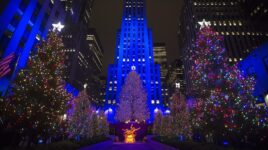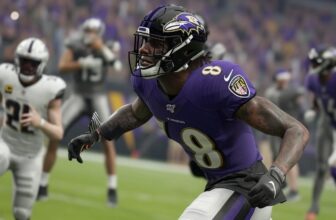
Top 20 Most Celebrated Holidays in the Us
The United States is known for its diverse cultural landscape and the rich tapestry of traditions that make up its national identity. One of the most prominent aspects of American culture is the celebration of holidays, which serve as important markers throughout the year.
From cherished traditions to historical commemorations, these holidays hold great significance for people across the country. In this article, we will explore the top 20 most celebrated holidays in the US and delve into their historical, cultural, and social significance.
As we embark on this exploration, it is important to recognize that holidays play a crucial role in shaping American culture. These occasions provide an opportunity for individuals and communities to come together in celebration, reflection, and remembrance. Each holiday has its own unique customs, rituals, and traditions that contribute to the fabric of American society.
From New Year’s Day to Christmas and everything in between, each holiday has its own distinct history and meaning. Whether it’s a time for honoring national leaders, remembering the sacrifices of military personnel, or simply coming together with loved ones, these holidays reflect the values and beliefs that are integral to the American experience.
In addition to exploring individual holidays in depth, we will also highlight the diversity of celebrations across different regions of the country. From parades and fireworks displays to family gatherings and community events, these holidays provide a glimpse into the many facets of American culture. Join us as we take a closer look at some of the most cherished and significant holidays in America.
New Year’s Day
Traditions
One of the most popular traditions associated with New Year’s Day is the practice of making resolutions for the upcoming year. Many people take this opportunity to set personal goals and make positive changes in their lives. Another common tradition is the custom of watching the ball drop in Times Square, New York City, which has become an iconic symbol of the holiday.
Celebrations
New Year’s Day is also celebrated with parties, fireworks, and other festivities across the country. Many people attend social gatherings or hold their own events to ring in the new year with friends and family. In some cultures, special foods are consumed on New Year’s Day, such as black-eyed peas or lentils, which are believed to bring good luck and prosperity for the year ahead.
History
The celebration of New Year’s Day has ancient roots, dating back to ancient Babylon around 4,000 years ago. The first day of the modern Gregorian calendar was adopted by Julius Caesar in 45 B.C. and it has been celebrated ever since.
Overall, New Year’s Day holds a special place in American culture as a time for reflection, fresh starts, and coming together with loved ones to welcome the possibilities of a new beginning. It is a time when people look forward to what lies ahead while cherishing memories from the past year.
Martin Luther King Jr Day
Martin Luther King Jr. Day, observed on the third Monday of January each year, is a holiday dedicated to honoring the life and achievements of civil rights leader Martin Luther King Jr. This day serves as an important reminder of the ongoing fight for equality and justice in the United States.
It is a time for reflection on the progress that has been made in the civil rights movement, as well as a recognition of the work that still needs to be done to achieve Dr. King’s vision of a truly equal society.
One of the most significant traditions associated with Martin Luther King Jr. Day is the annual observance of his birthday, which falls on January 15th. Across the country, communities come together to celebrate Dr. King’s legacy through various events and activities, including marches, parades, and service projects aimed at promoting social justice and equality.
These celebrations are not only a tribute to Dr. King’s contributions to the civil rights movement but also serve as a call to action for continued advocacy for racial and social justice.
In addition to commemorating Dr. King’s life and work, Martin Luther King Jr. Day has become a day of service in honor of his commitment to community activism and empowerment. Many individuals and organizations participate in volunteer activities aimed at addressing issues such as poverty, homelessness, and education inequality. Through these acts of service, people from all walks of life come together to make a positive impact in their communities, embodying Dr. King’s message of unity and compassion.
It is important to note that Martin Luther King Jr. Day holds special significance in American history as it was not officially observed in all states until 2000. Prior to that year, only some states recognized this holiday, but after years of tireless advocacy efforts by activists and lawmakers alike, it finally became a federal holiday for all states.
As one of the top 20 most celebrated holidays in the US, Martin Luther King Jr. Day serves as an enduring reminder of the importance of standing up for justice and equality while celebrating the legacy of one of America’s most influential civil rights leaders.
- Reflecting on Dr.King’s legacy
- Annual observance events
- Volunteer activities
- Historical significance
- Message behind MLK Day
Presidents’ Day
Originally established in 1885 to honor George Washington on his February 22nd birthday, Presidents’ Day has since evolved to celebrate all U.S. presidents. It was officially designated as Presidents’ Day in recognition of Abraham Lincoln’s February 12th birthday as well. As a result, it has become a day to pay tribute to all individuals who have served as President of the United States.
One of the most significant aspects of Presidents’ Day is its historical roots in honoring the leadership and achievements of past presidents. Many communities organize parades, public ceremonies, or educational events that focus on educating the public about the role of these leaders in shaping American history and society. Additionally, some people use this day as an opportunity to visit presidential museums or historic sites dedicated to preserving the legacies of notable presidents.
Businesses and retailers often take advantage of Presidents’ Day by offering special sales and discounts on various goods and services. This has become a popular aspect of the holiday for many Americans who use it as an opportunity to shop for big-ticket items at discounted prices. While some people may view this practice as being unrelated to the original intent of honoring past presidents, it has nonetheless become an ingrained part of how many people observe this holiday.
| Presidents’ Day Activities | Popularity |
|---|---|
| Parades and public ceremonies | High |
| Sales and discounts | High |
| Visits to presidential museums/historic sites | Moderate |
Memorial Day
Traditionally, Memorial Day is marked by various traditions and customs that pay tribute to fallen heroes. One of the most common practices is visiting cemeteries and memorials to decorate the graves of loved ones who served in the military. This act of remembrance allows families and communities to honor and show gratitude for the sacrifices made by servicemen and women.
Another prominent tradition associated with Memorial Day is the moment of silence at 3:00 p.m. local time. This nationwide observance serves as a time for reflection and unity as Americans pause to remember the bravery and selflessness of those who have given their lives in service to their country. Many communities also hold memorial services, parades, and other events to commemorate the day.
In addition to these customs, displaying the American flag at half-staff until noon on Memorial Day is a gesture of respect for those who have died in service. This tradition symbolizes mourning for the fallen while also acknowledging their honor, courage, and commitment to defending freedom.
Overall, Memorial Day stands as a poignant reminder of the sacrifices made by members of the armed forces. It serves as an opportunity for Americans to come together in remembrance, gratitude, and respect for those who have paid the ultimate price for their country. The traditions associated with this day not only honor fallen heroes but also unite communities in acknowledgment of their bravery and dedication.
Ultimately, Memorial Day holds a significant place among the top 20 most celebrated holidays in the US due to its profound cultural significance and deeply held traditions that capture both reverence for our nation’s defenders and national gratitude for their valiant service.
Independence Day
The history and significance of Independence Day can be traced back to the early years of American history. On July 2, 1776, the Continental Congress voted in favor of independence and two days later delegates from the 13 colonies adopted the Declaration of Independence drafted by Thomas Jefferson. The day has been celebrated as a national holiday in the United States since 1941.
One of the most iconic traditions associated with Independence Day is fireworks displays. These colorful and awe-inspiring spectacles light up the night sky and are a highlight of celebrations in cities and towns across America. Fireworks symbolize the joy and excitement of freedom for Americans as they gather to commemorate this significant day.
In addition to fireworks, parades are another common feature of Independence Day celebrations. These parades often include marching bands, military units, veterans’ groups, and other community organizations that come together to honor the nation’s history and celebrate its independence. Parades are a visual representation of patriotism and civic pride.
Moreover, many Americans celebrate Independence Day with outdoor barbecues or picnics with family and friends. Grilling food outdoors is an essential part of Fourth of July festivities for many people. It’s a time for people to come together to enjoy good food, company, and activities while celebrating their freedom as a nation.
| Independence Day Traditions | Significance |
|---|---|
| Fireworks Displays | Symbols joy and excitement of freedom |
| Parades | Visual representation of patriotism |
| Barbecues/Picnics | Celebrating freedom with family and friends |
Labor Day
During the late 19th century, labor movements in the United States advocated for better working conditions, reduced work hours, and fair wages for workers. As a result of these efforts, Labor Day became an official federal holiday in 1894. The holiday also marks the unofficial end of summer and is often celebrated with parades, picnics, barbecues, and other festivities that bring communities together.
The significance of Labor Day goes beyond just marking the end of summer or enjoying a day off work. It serves as a reminder of the hard work and dedication of American workers across different industries. From teachers and healthcare professionals to factory workers and service providers, Labor Day is an opportunity to express gratitude for their essential roles in shaping the nation’s economy and society.
To further emphasize this significance, many businesses and organizations choose to close their doors on Labor Day to allow employees to enjoy a well-deserved break. Additionally, some communities hold events such as job fairs or workshops to support workforce development initiatives and promote employment opportunities.
Thanksgiving
The Thanksgiving Feast
One of the most beloved traditions of Thanksgiving is the grand feast that brings families and loved ones together. The centerpiece of this meal is usually a roasted turkey, accompanied by an array of side dishes such as stuffing, mashed potatoes, cranberry sauce, and pumpkin pie. Many families have their own unique recipes and traditions when it comes to preparing this special meal.
Parades and Football Games
In addition to the festive meal, Thanksgiving is known for its parades and football games. The Macy’s Thanksgiving Day Parade in New York City is a highly anticipated event featuring larger-than-life balloons, floats, marching bands, and performances. Meanwhile, football has become synonymous with Thanksgiving, with many families gathering around the television to watch their favorite teams compete on this special day.
Expressing Gratitude
At its core, Thanksgiving is about expressing gratitude and appreciation for the blessings in life. Many families incorporate traditions such as going around the table before the meal to share what they are thankful for. Some also engage in acts of service by volunteering at soup kitchens or donating to those in need during the holiday season.
Historical Roots
The origins of Thanksgiving can be traced back to 1621 when the Pilgrims held a harvest festival to give thanks for a successful growing season. Today, it serves as a reminder of that early celebration and also acknowledges the historical interactions between Native Americans and European settlers.
Thanksgiving holds a special place in American culture as a time for reflection, gratitude, and coming together with loved ones. Its rich history and diverse traditions make it one of thpetop 20 most celebrated holidays in US. Whether it’s enjoying a traditional meal or watching parades and football games, Thanksgiving continues to be a cherished holiday that brings people closer together.
Christmas
Decorating Homes
One of the most beloved traditions of Christmas is decorating homes with festive lights, ornaments, and trees. Many families spend time together putting up decorations both inside and outside their homes. Christmas trees are typically adorned with colorful lights and an array of ornaments, while wreaths are hung on doors as a symbol of welcome and holiday cheer.
Exchanging Gifts
The tradition of exchanging gifts has deep roots in American culture during Christmas. Families and friends often exchange presents to show appreciation and love for one another. Many people also participate in Secret Santa gift exchanges at work or within social groups as a way to spread holiday cheer.
Attending Religious Services
For those who celebrate Christmas for its religious significance, attending church services on Christmas Eve or Christmas Day is a cherished tradition. This is a time for prayer, reflection, and celebration of the birth of Jesus Christ.
Holiday Feasts
Another important part of the Christmas celebration in the US is preparing a special feast to share with loved ones. Traditional dishes such as roast turkey or ham, mashed potatoes, cranberry sauce, and pumpkin pie are common staples of a Christmas meal.
Family Gatherings
Above all, Christmas is a time for family gatherings. It brings people together to enjoy each other’s company amidst the hustle and bustle of the holiday season.
The various traditions associated with Christmas make it one of the most cherished times of the year for many Americans. Whether celebrating through religious observance or simply enjoying time spent with loved ones, Christmas holds a special place in American culture as a time for gratitude, generosity, and merriment.
Other Celebrated Holidays
Veterans Day is observed annually on November 11th to honor military veterans who have served in the United States Armed Forces. The holiday originated as Armistice Day on November 11, 1919, the first anniversary of the end of World War I. In 1954, it was officially changed to Veterans Day to include American veterans of all wars. On this day, many communities hold parades and commemorative events to honor and thank veterans for their service and sacrifice.
Halloween, celebrated on October 31st, has its roots in ancient Celtic traditions and has evolved into a day of costumes, trick-or-treating, and festive gatherings. It is believed that Halloween traditions like carving jack-o’-lanterns and wearing costumes originated from the Celtic festival of Samhain, where people would light bonfires and wear costumes to ward off roaming ghosts. Today, children and adults alike enjoy dressing up in creative costumes and attending Halloween parties.
In addition to these widely recognized holidays, there are several other significant observances that hold cultural importance for various communities across the United States. For example:
- Cinco de Mayo: Celebrated mainly in Mexican-American communities, Cinco de Mayo commemorates the Mexican army’s victory over French forces at the Battle of Puebla on May 5th, 1862.
- Hanukkah: A Jewish holiday also known as the Festival of Lights, Hanukkah is celebrated for eight days and nights with the lighting of the menorah.
- Kwanzaa: Created in 1966 by Dr. Maulana Karenga as a way for African Americans to reconnect with their African cultural and historical heritage, Kwanzaa is observed from December 26th to January 1st with feasts, music, storytelling, and candle-lighting ceremonies.
These holidays contribute to the rich tapestry of traditions observed throughout the United States. They offer opportunities for people to celebrate their heritage, connect with their communities, and share their customs with others.
| Holiday | Date |
|---|---|
| Veterans Day | November 11th |
| Halloween | October 31st |
| Cinco de Mayo | May 5th |
| Hanukkah | December (varies) |
| Kwanzaa | December26 – January1 |
Conclusion
In conclusion, holidays play a significant role in American culture, reflecting the nation’s history, values, and traditions. From New Year’s Day to Christmas and everything in between, these celebrations bring people together, honor important figures and events, and provide moments of reflection and gratitude. As seen from the diversity of celebrations across the country, these holidays hold different meanings for different communities, yet they all contribute to the rich tapestry of American identity.
The top 20 most celebrated holidays in the US showcase the country’s diversity and inclusivity. Each holiday represents different aspects of American heritage and serves as a reminder of the nation’s past while also looking forward to its future. From honoring civil rights leaders like Martin Luther King Jr. to paying tribute to military personnel on Memorial Day, these holidays remind Americans of the sacrifices made for freedom and equality.
Additionally, the traditions associated with each holiday offer a glimpse into the unique customs and cultural practices that have been passed down through generations. Whether it’s barbecues on Independence Day or family gatherings on Thanksgiving, these customs strengthen connections between individuals and communities.
Furthermore, holidays serve as an opportunity for Americans to come together with loved ones, fostering a sense of unity and belonging. These celebrations create moments for people to pause from their daily routines and express gratitude for what they have while also looking forward to new beginnings.
In essence, as we reflect on the significance of these celebrated holidays in American culture, we are reminded of the values that unite us as a nation – liberty, equality, resilience, and unity. Through these shared experiences and traditions, Americans continue to uphold the importance of coming together to celebrate history, diversity, and community.



